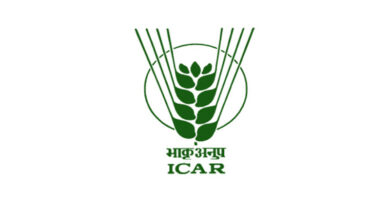FICCI India Maize Summit 2023: India ranks 4th in terms of global maize acreage and 6th in production
18 April 2023, New Delhi: Globally, 1.21 billion MT of maize was produced across 205.87 million ha. in 2021. The USA was the largest producer of maize contributing to about 32% of global production, followed by China (23%), Brazil (7%), Argentina (5%), and Ukraine (3%). These five countries contribute 70% of global maize production. India ranked 4th and 6th in terms of global maize acreage and production, contributing to about 3.96% and 2.13% respectively.
In the year 2021, the International trading of maize reached approximately USD 52 billion across 155 countries. Most of the global export value came from the top five maize-exporting nations, which accounted for about 77% of total exports. The leading exporters were the USA (37%), Argentina (17%), Ukraine (11%), Brazil (8%), and France (4%).
In the year 2021, India imported roughly about 24 thousand MT of maize worth USD 14.20 million, while the country’s maize exports amounted to 3.62 million MT valued at about USD 935.61 million, a 2.4X increase in export value over the previous year. This significant rise in exports was driven by surging maize prices across the globe, which made Indian maize prices more competitive in the international market. In addition, the demand resurgence in the South & Southeast Asian countries (for example Bangladesh, Vietnam, Malaysia) and lower supply from traditional regions of Argentina and Brazil amid bad weather conditions further boosted maize exports.
Despite significant growth in production, the productivity of maize in India (3.07 MT/Ha) is still far lower than that of other major maize-growing nations such as the USA (10.51 MT/Ha) and Argentina (7.86 MT/Ha). This productivity gap is likely due to the limited adoption of technological advancements across the maize supply chain. Historically, conservation agriculture practices have been successfully employed in Indian maize-based cropping systems to maintain productivity and profitability. However, to keep up with future demand and remain competitive in the global market, it is essential to implement modern technology-driven practices throughout the entire maize supply chain.
The Government of India, along with state governments, has taken numerous proactive steps to promote the adoption of modern technology and innovations in the agriculture sector. The government has introduced various developmental initiatives and schemes that have a direct bearing on the rate of introduction and adoption of innovative technologies in Agriculture. Such initiatives include the National Food Security Mission, the National Livestock Mission, the National Project on Soil Health and Fertility, National Agriculture Markets (e-NAM), National e-Governance Plan in Agriculture (NeFP-A), PM-Kusum, promotion of agritech start-ups, promotion of digital extension services and investing on Agri-Stack.
In addition to these initiatives, the Government has launched the Digital Agriculture Mission 2021-25 to promote the use of digital technologies in agriculture. The mission aims to cover one million villages across India, providing farmers with real-time market information, enabling direct market linkage, and facilitate e-commerce platforms for agricultural products.
To ensure that maize technology interventions are being leveraged to their fullest potential, all stakeholders, including policymakers, researchers, and the private sector must work collaboratively. This report identifies five distinct action areas for the identification, adoption, and scaling of innovations and technologies. They include:
- Promoting public-private partnerships to leverage technologies
- Improving the adaptability of new technologies
- Devising effective extension programs
- Building necessary connectivity infrastructure
- Developing an enabling regulatory environment for the introduction and adoption of new technologies
(For Latest Agriculture News & Updates, follow Krishak Jagat on Google News)















